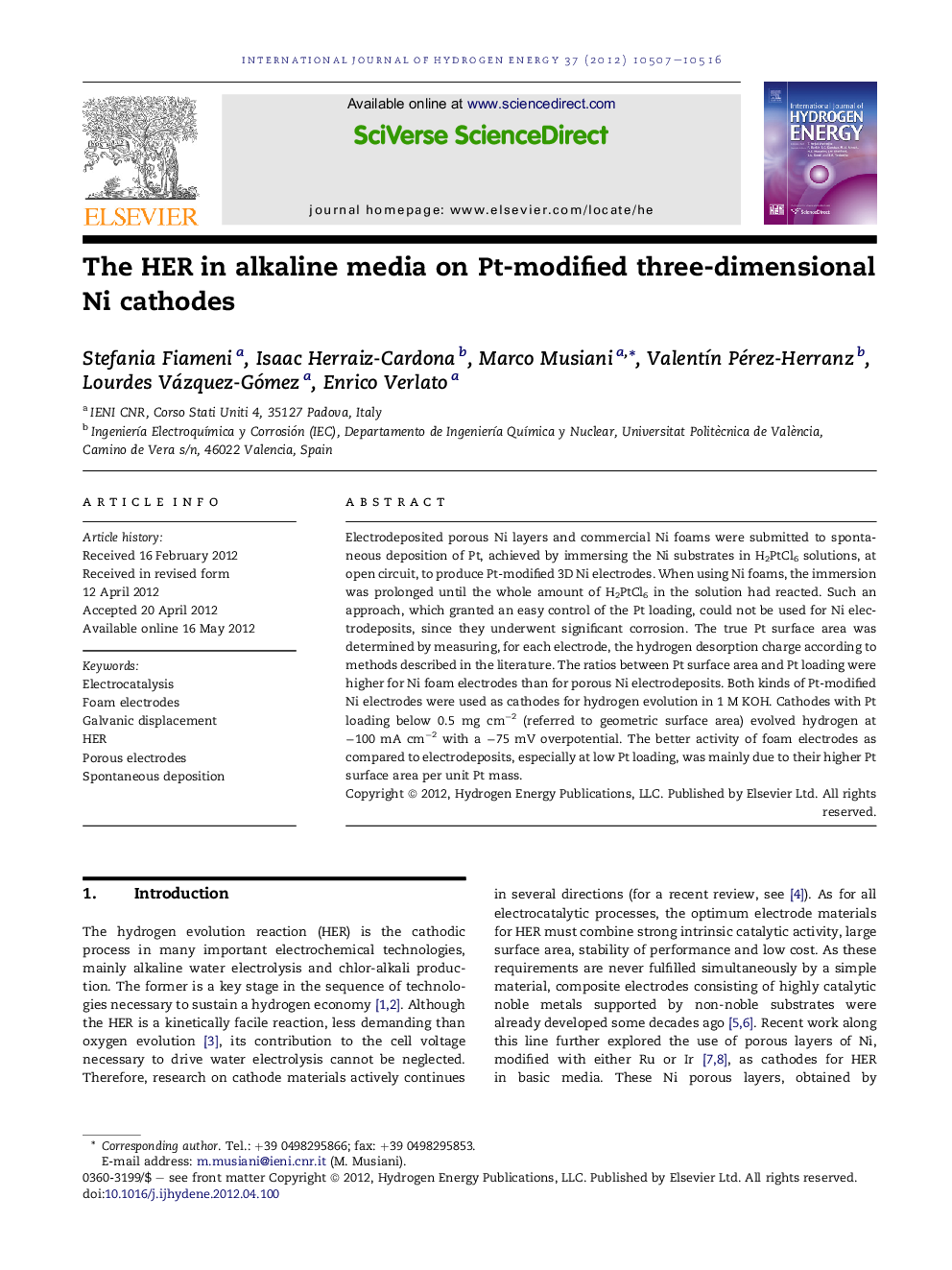| Article ID | Journal | Published Year | Pages | File Type |
|---|---|---|---|---|
| 1276330 | International Journal of Hydrogen Energy | 2012 | 10 Pages |
Electrodeposited porous Ni layers and commercial Ni foams were submitted to spontaneous deposition of Pt, achieved by immersing the Ni substrates in H2PtCl6 solutions, at open circuit, to produce Pt-modified 3D Ni electrodes. When using Ni foams, the immersion was prolonged until the whole amount of H2PtCl6 in the solution had reacted. Such an approach, which granted an easy control of the Pt loading, could not be used for Ni electrodeposits, since they underwent significant corrosion. The true Pt surface area was determined by measuring, for each electrode, the hydrogen desorption charge according to methods described in the literature. The ratios between Pt surface area and Pt loading were higher for Ni foam electrodes than for porous Ni electrodeposits. Both kinds of Pt-modified Ni electrodes were used as cathodes for hydrogen evolution in 1 M KOH. Cathodes with Pt loading below 0.5 mg cm−2 (referred to geometric surface area) evolved hydrogen at −100 mA cm−2 with a −75 mV overpotential. The better activity of foam electrodes as compared to electrodeposits, especially at low Pt loading, was mainly due to their higher Pt surface area per unit Pt mass.
► Ni–Pt cathodes for alkaline water electrolysis were prepared and tested. ► Ni foams and Ni porous electrodeposits were used as 3D Ni substrates. ► Pt nuclei were formed by spontaneous deposition (galvanic displacement). ► Accurate control of Pt loading and Pt surface area were achieved. ► Low Pt loading was sufficient to achieve low HER overpotential.
